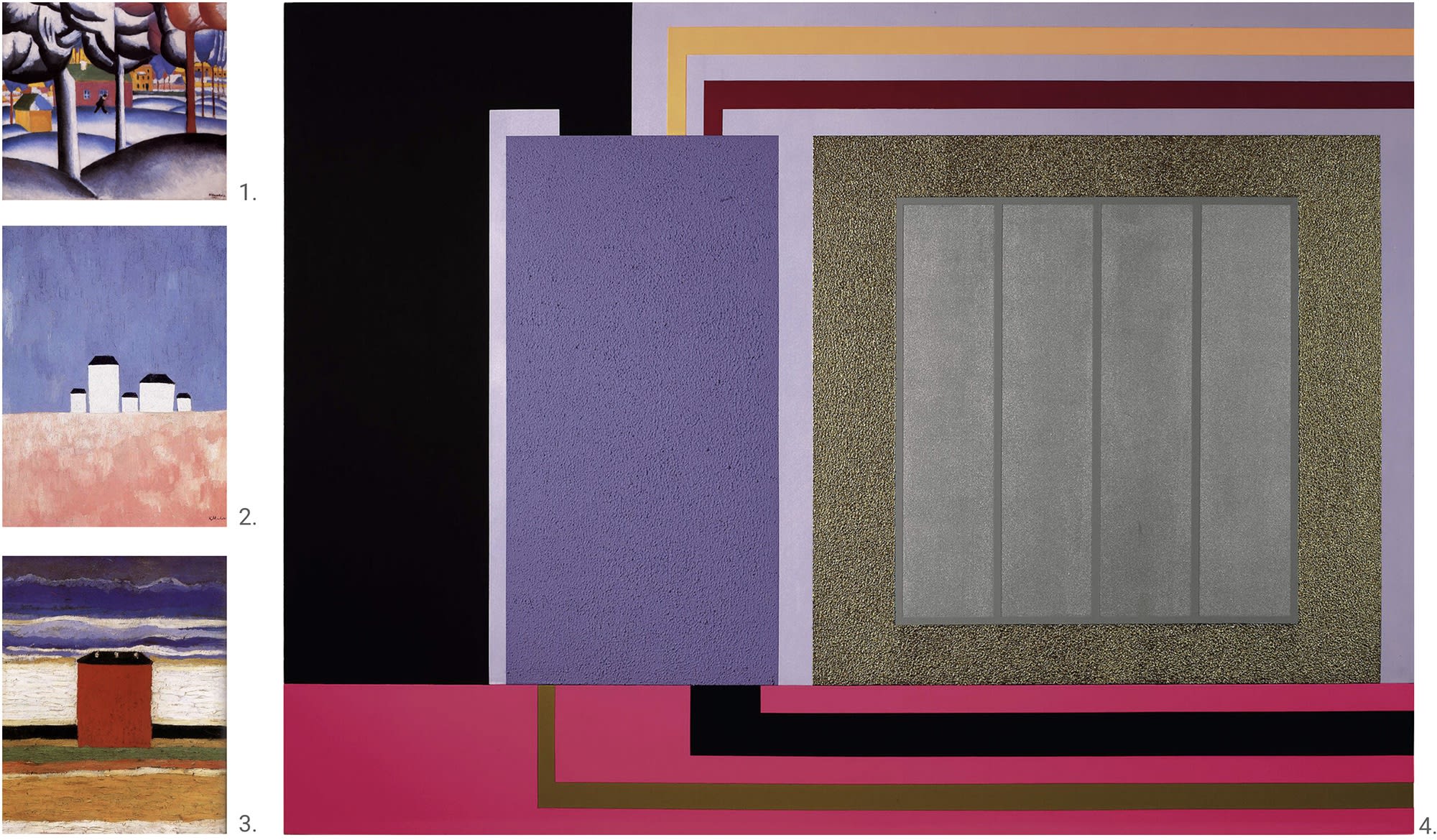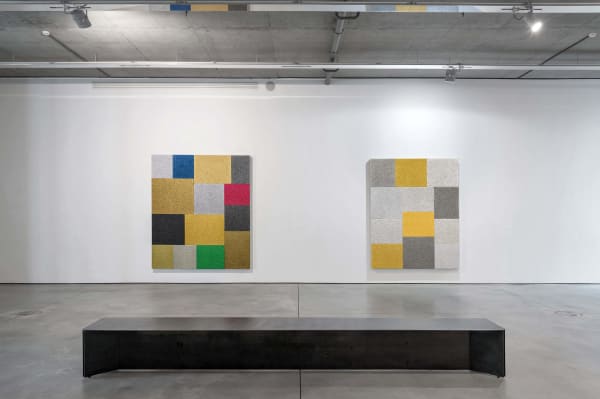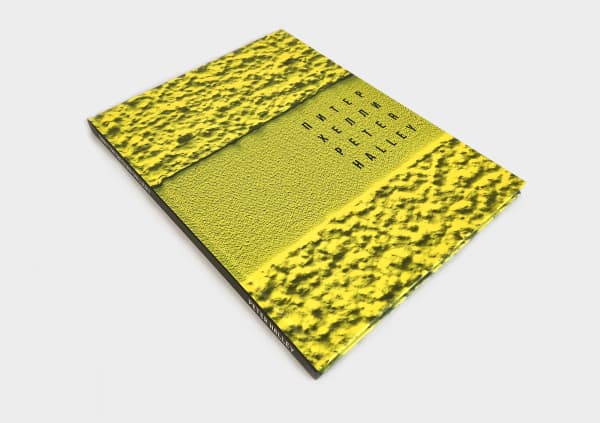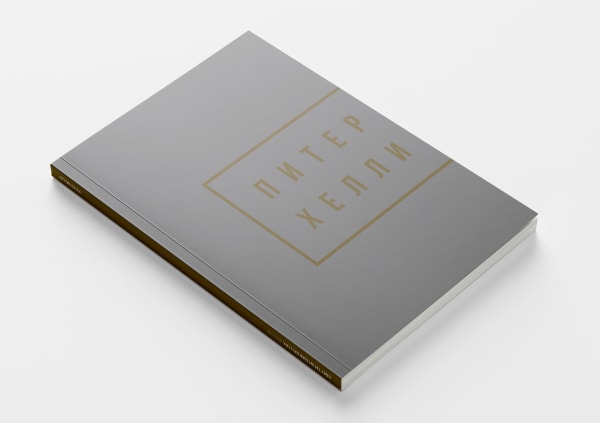-

-
"I grew up with the notion that paintings create light, that picturing light was really important. As my work developed, I wanted to make paintings that created light, not natural light, but an artificial light."
- Peter Halley
A legitimate heir of American abstractionism and the central figure in the Neo-Geometric Conceptualism (Neogeo) movement, Peter Halley has masterfully reimagined the language of abstraction of early 20th century modernism.
-
Inspired by the works of Kazimir Malevich, Piet Mondrian, Josef Albers, Barnett Newman, and Frank Stella, he employs geometry as a visual form that metaphorically reflects the social and urban landscape while conveying human isolation and connectivity. Using symbolic structures and shapes, which he designates as "prisons", "cells", and "conduits", Halley aims to convey the regimentation of the spaces we occupy and how they are shaped by forces beyond our control.
-
 1. Kazimir Malevich. Winter Landscape, 1930 © Museum Ludwig. 2. Kazimir Malevich. Landscape with Five Houses, 1928–1929 © Russian Museum. 3. Kazimir Malevich. Red House, 1932 © Russian Museum. 4. Peter Halley. Shadow conspiracy, 1996 © Gary Tatintsian Gallery and the artist
1. Kazimir Malevich. Winter Landscape, 1930 © Museum Ludwig. 2. Kazimir Malevich. Landscape with Five Houses, 1928–1929 © Russian Museum. 3. Kazimir Malevich. Red House, 1932 © Russian Museum. 4. Peter Halley. Shadow conspiracy, 1996 © Gary Tatintsian Gallery and the artist -
"Nature, in Halley's work, is the thinking, feeling, acting human subject: an implied presence dwelling within the prisons and cells or laid to rest in a grave or underground chamber."
– Michelle Cotton
"(Anti) Social Networks: Technology and Social Relations in the Work of Peter Halley" in the exhibition catalogue Conduits: Paintings from the 1980s (Luxembourg: Mudam and Hatje Cantz, 2023)
Digital revolution and radically fast-growing technologies made a great impact on the visual arts, serving as an inspiration and source material for artists. The exhibition "Information Art: Diagramming Microchips" organized by the Museum of Modern Art in New York in 1990 for the first time demonstrated the complex beauty of technologies, displaying the computer-generated diagrams from 1970s and 1980s along with real microchips and circuits. This presentation organically unveiled the parallels between the intricate layered patterns and colors of the machine-generated image and the geometric motifs found in abstract painting. Peter Halley's artwork from this decade came to symbolize a contemporary manifestation of a new concept from the age of emerging technology. Through the vocabulary of geometric abstraction, his works conveyed fresh perspectives on a dynamically evolving modern world, open to new artistic experiences.
-
Shadow conspiracy (1996) is a part of a significant cell-and-conduit painting series created in 1990s. This work is characterized by a harmonious blend of diverse surfaces and rich colors, highlighted by a distinctive combination of vibrant purple and striking violet, which prominently command the composition. Multiple bars interconnect and overlay squares and rectangles, masterfully merging the dynamics of geometric structures with the graceful architecture of classical painting.
-
 Peter Halley © Nicholas Calcott
Peter Halley © Nicholas Calcott -
-
-
Find out more
-

Peter Halley
-

Peter Halley
Personal Exhibition 23 June - 10 September 2017 -

Peter Halley
2017 September 1, 2017 -

Peter Halley
201564 pages 220×290 mm Weight: 0,425 kg Paperback ISBN: 978-5-9906881-0-0
-
-
-
Viewing Rooms
Viewing Room | Peter Halley. Shadow Conspiracy, 1996
Past viewing_room














